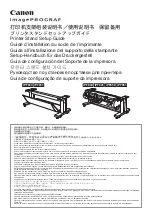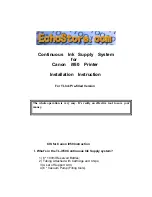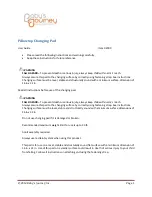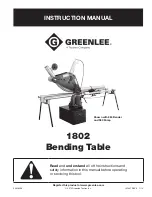
nv
Niko
sa Industriepark West 40, BE-9100 Sint-Niklaas, Belgium — tel. +32 3 778 90 00 — fax +32 3 777 71 20 — e-mail: [email protected] — www.niko.be
PMXXX-78100R08171
XXX-78100 SENSOR (XX-781)
1
2 3 4 5 6 7
Prog.
88
21:0°C
�
1. DESCRIpTION
This sensor is part of the Niko sensor/actor product range. This range offers a number of comfort functions in
combination with different switch functions.
XXX-78100:
clock thermostat 45 x 45mm (
XX-781
+ transition frame)
Attention:
suitable only for indoor mounting!
Sensor (A)
= the visible electronic component, available in all Niko flush mounting designs and colours, which,
either automatically or after manual operation, sends a switch command to the connected actor.
Actor (B)
= the built-in component, which, upon receipt of a command from the connected sensor, switches
the connected load or transmits a Nikobus telegram.
2. TECHNICAl DATA
• To be used in combination with actor
420-0010X (09-7X1) or 420-0020X (09-7X2)
• Day/week programming
• Setting precision: ± 0.5 °C
• 30min power reserve in case of power cut, the program remains in memory
• Manual operation possible
• Max. setting of 24 switch movements
• 3 types of temperature levels: day, night, and antifreeze level
• Time or temperature display can be set permanently
• 6 speed selections: in function of the dimensions of the location (RP value)
• Installation instructions:
- mounting height: ±1,5m
- free air circulation
- not in direct sunlight
- not directly exposed to a heating element
• Ambient temperature: 0 -> 40°C
• Storage temperature: -25 -> 75°C
The actors may switch up to 1A when used in combination with a temperature sensor. If a higher power
is switched, the heating of the actor will disturb the proper operation of the temperature sensor. The
thermostat is designed to control the control valves or an input contact of the central heating.
3. OpERATION
The thermostat has an internal PI control and
controls the heating system with pulse width
modulation (PWM). The thermostat will distrib
-
ute its control over various cycles. Depending
on the temperature measured, it can in the next
cycle control the contact for 10 to 100 percent
of the cycle. The length of a full cycle depends
on the RP value (see setting RP value).
During installation, the following must be
taken into account:
• response times of the control valves. These usually have a response time of 0-100% in 3 minutes.
• cooling period of the boiler. Use a bypass if necessary.
4. DISplAy AND OpERATING KEyS
Keys
Function
increase set temperature (in steps: press briefly; scrolling: press long)
decrease set temperature (in steps: press briefly; scrolling: press long)
select the weekday
displaying and confirming current time
programming
displaying current temperature
RESET (Do not press this push button with sharp, metal objects)
The buttons
and
are intended only for the first use or for the programming of the clock thermostat.
current weekday
menu
1 = Monday
programming
menu
time setting
setting the temperature
level menu
heating
temperature level indication:
memory location
active
sun = day temperature level
moon = night temperature level
manual operation
ice crystal = antifreeze temperature level
active
5. CONFIGuRATION
If no operation is carried out during 30s., the thermostat will return automatically to the starting screen. After
±10min, the clock thermostat displays the correct temperature.
Basic settings
The basic settings always have to be set when using the thermostat for the first time or after a RESET. The
basic settings are: current weekday and hour, the RP value which depends on the space and the regulation
value for day, night and antifreeze temperature.
A. Setting the weekday and hour
When switching on the voltage for the first time or after a RESET, all symbols and segments briefly appear on
the display. If no hour is stored, the unit automatically displays the setting of the hour and weekday mode. Time
and weekday blink, you can immediately go to step 2.
Step Action
Result
1
Press for 3s to activate mode for setting hour
and weekday.
Time and weekday blink.
2
Press
to set weekday.
1 = Monday, 2 = Tuesday…
3
Press or to set the time.
• press briefly: setting of the minutes
• press long: phases of 5min, afterwards by hour
4
Press again .
Return to starting screen
B. Setting the Rp value
Not all heating installations react at the same speed. For this reason, the switching on/off sequence of the instal
-
lation has to be adapted to the local circumstances (regulation period). This is done through the RP value.
The unit is provided with 6 RP values, starting with RP1 for small areas (fast regulation period) up to and
including RP6 for large areas (slow regulation period).
Rp value
Minutes
Application
1
4
small rooms, electrical heating 4...6°C/hour
2
8
3
12
4
16
5
20
6
24
large rooms, underfloor heating 1...2°C/hour
Step Action
Result
1
Press and
simultaneously.
Unit switches to RP setting.
2
Press or to set RP value.
RP1; RP2; … ; RP6
3
Press .
Return to starting screen
C. Setting the temperature levels
The temperature levels below are the standard settings.
Temperature level
Symbol
Standard setting
Setting range
Day
Sun
+ 20°C
between night level and +30°C
Night
Moon
+ 15°C
b7°C and day level
Antifreeze
Ice crystal
+ 7°C
Fix value, cannot be set
The settings of the day and night level can be modified as follows:
Step Action
Result
1
Press for 3s .
Unit switches to programming.
2
Press
to select day or night temperature level. Sun or moon appear on the left side of the display.
3
Press or .
Increase/decrease temperature by 0.5 °C.
4
Press .
Return to starting screen
D. Setting the offset value
There are certain factors that can affect the temperature measurement. There can be a difference between
the temperature stated on the thermostat and the actual temperature in the room. To correct this difference,
proceed as follows:
Wait for at least 10min, so the temperature stated on the clock thermostat is steady. Then read the tempera
-
ture in the room from a thermometer. If the temperature stated on the thermostat is lower / higher than the
temperature stated on the termometer, you have to set a positive resp. negative offset value. This way, you can
adjust the temperature from -6°C to +6°C.
NOTE: to guarantee a steady temperature, set the offset value when taking the thermostat into use. The fabric
setting is 0.
Step Action
Result
1
Press , and
simultaneously. Device will go to the offset setting. (indication on the screen: POd)
2
Press or .
Increase/decrease offset by 0,5°C.
3
Press .
Return to starting screen
The offset value can be set to a value between -6 °C below and +6 °C above the standard setting.
6. uSAGE
A. Setting the temperature manually (manual mode)
It is always possible to change the temperature manually if you wish to deviate from the set temperature
level. A manual action is indicated by a blinking ‘hand symbol’ on the display. At the same time, the symbol
‘thermometer’ for the indication of the temperature level disappears. After a few seconds, the actual room
temperature is again displayed.
Step Action
Result
1
Press or to increase/decrease temperature. Desired temperature blinks.
2
Press to confirm.
Return to starting screen, the current temperature
is displayed.
T°
t
20°C
19°C
18°C
RELAY ON
100%
Cycle 1 Cycle 2 Cycle 3 Cycle 4 Cycle ...
100% 50%
30%
10%
10%
A
B
10A
R,L,C
420-0010X (09-7X1)
XXX-78100 (XX-781)
4A
R,L
420-0020X (09-7X2)
EXT1
20 : 0° C


























